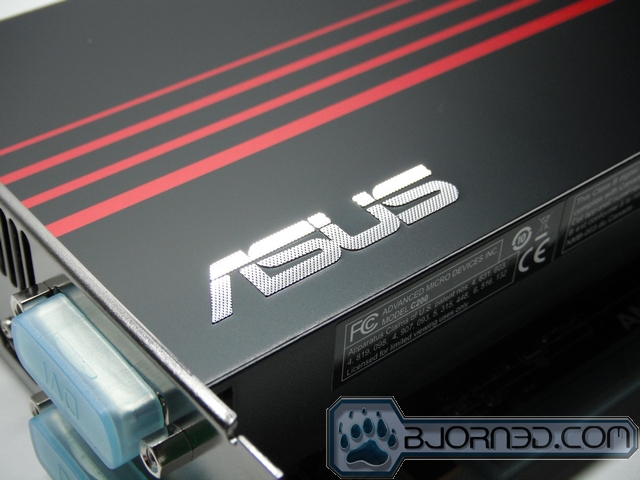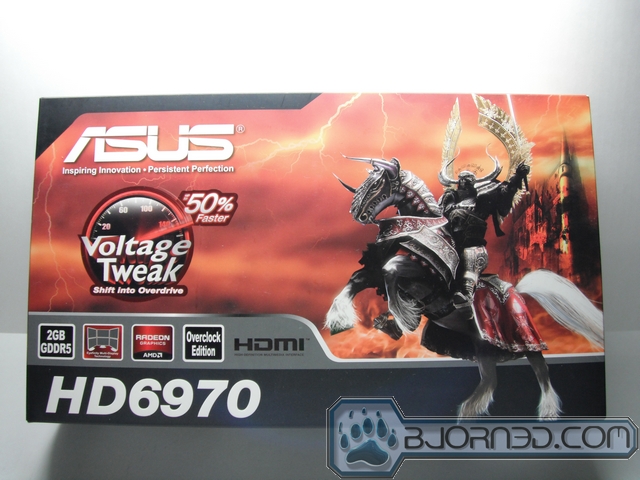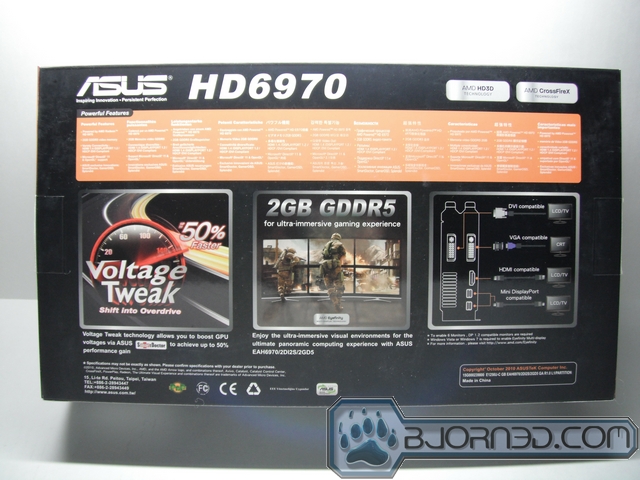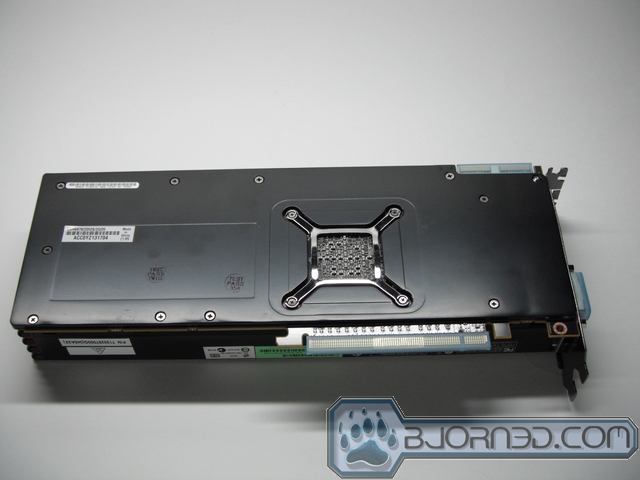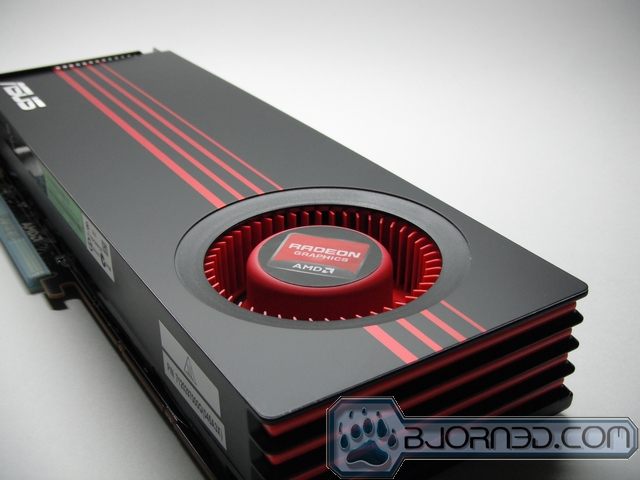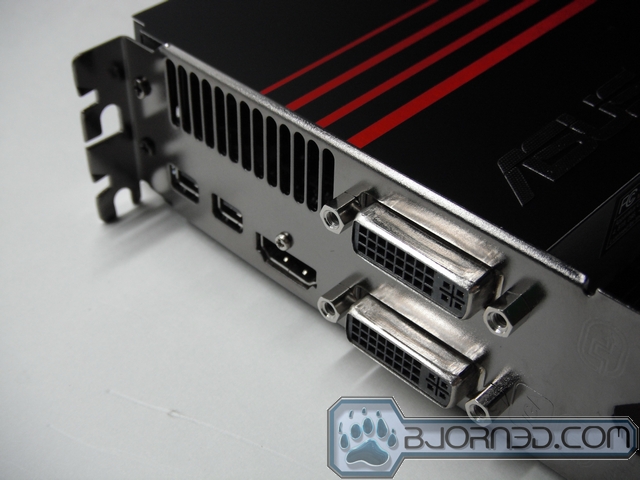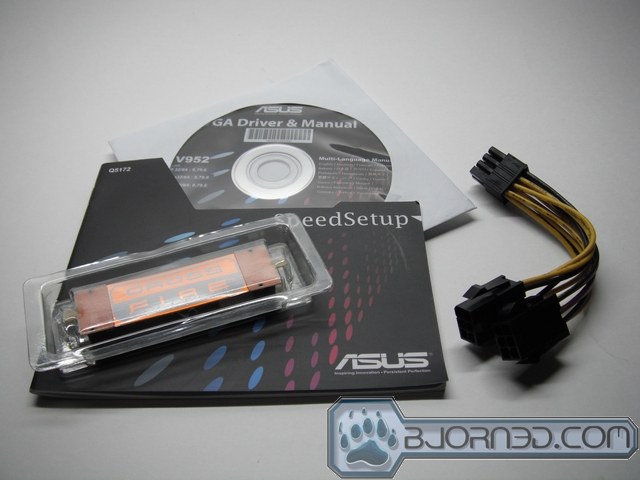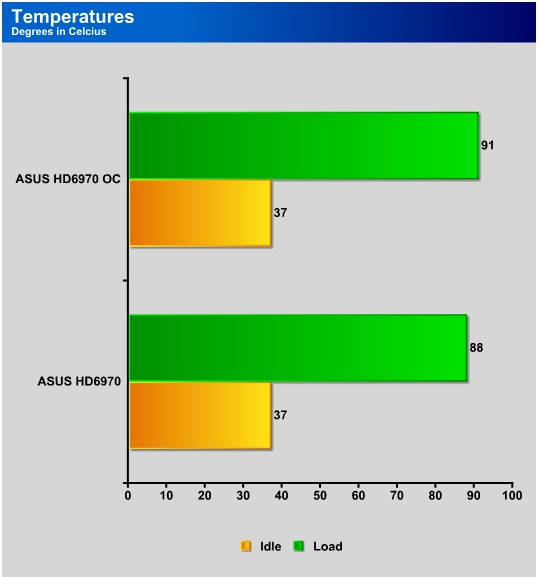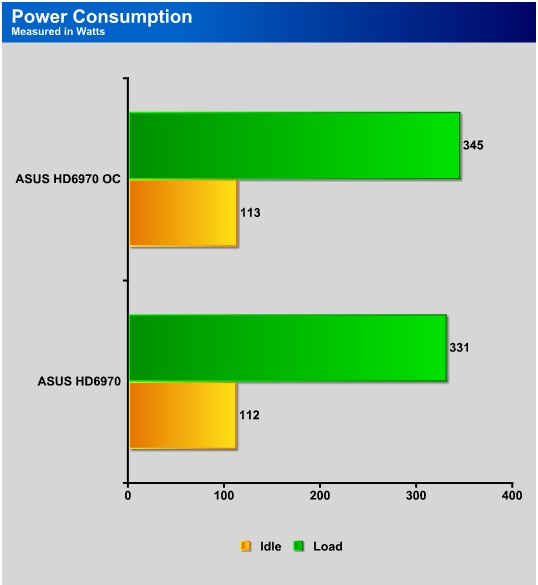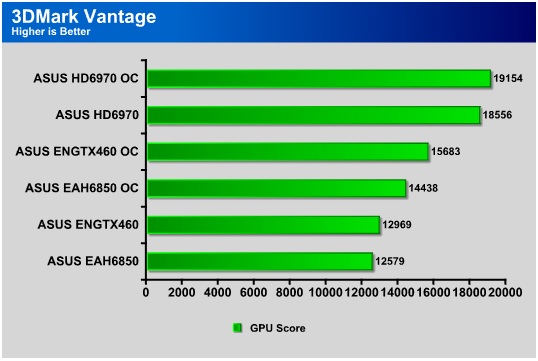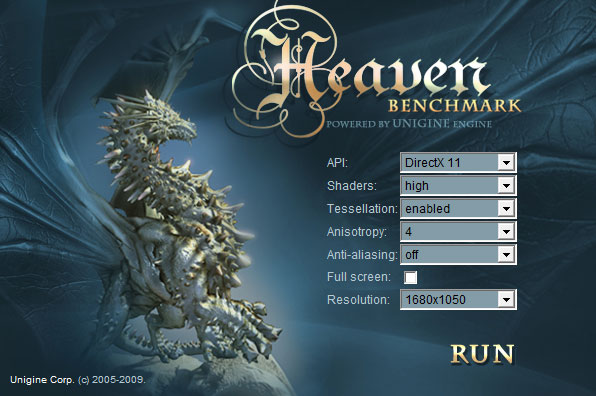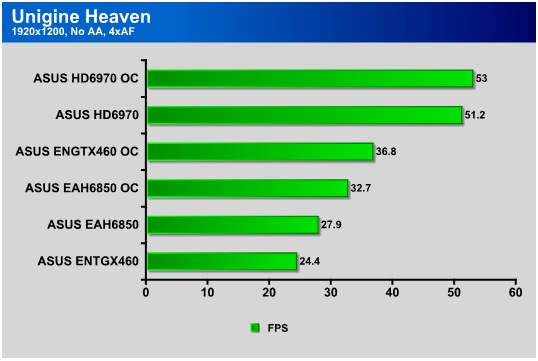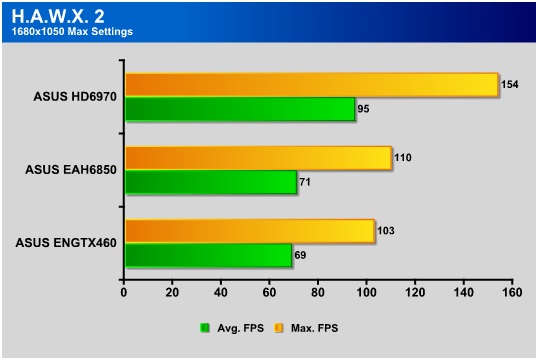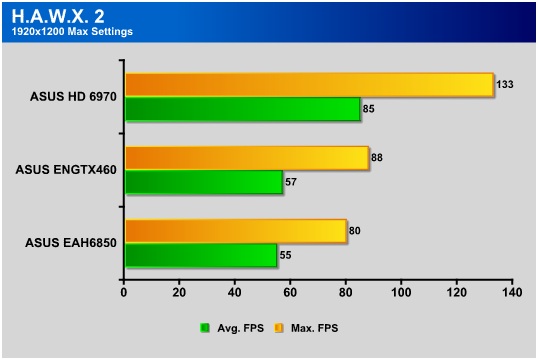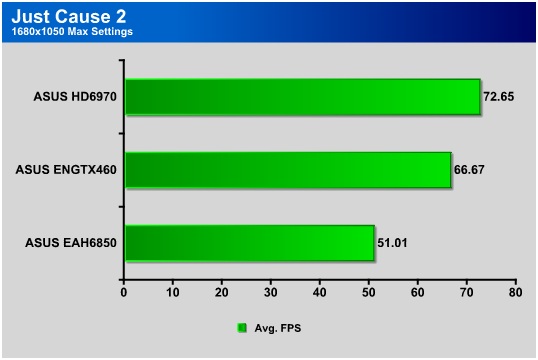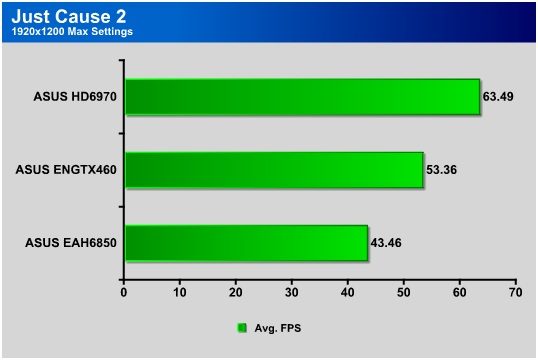The ASUS HD6970 is not only a beast in specifications, but in size and stature as well. 2GB of GDDR5 and a factory overclock provide the power to crunch through the toughest games.
INTRODUCTION
Lately there has been a steady flow of new videocards from both AMD and NVIDIA. It seems as if every other week, manufacturers are coming out with slightly tweaked models that out-performs the competition’s offerings. ASUS has released a replacement for the aging HD5870 with their HD6970. ASUS tweaked their 6970 just slightly by providing a 10Mhz increase of the GPU versus the stock settings. Packing an astonishing 2GB of GDDR5 running at 1375MHz (5500MHz), the HD6970 also provides support for up to six displays thanks to AMD’s Eyefinity technology. The ASUS HD6970 is not only a beast in specifications, but in size and stature as well. Continue along to see just how beastly this card is.
features
As mentioned earlier, ASUS bumped up the speed of the GPU by a small 10MHz. Luckily we were able to increase the overclock of the HD6970 beyond that. We have seen these small factory overclocks before and it still has us a bit puzzled as to why manufacturers even bother with such a tiny increase.
- Overclocked – Factory overclocked to perform at 890MHz, 10MHz higher than stock performance, resulting in higher frame rates in games.
- Full Aluminum Cover – Aluminum label on the cover dissipates surface heat much more evenly than reference coolers. Simply Cooler!
- Voltage Tweak – Full throttle overclocking with exclusive ASUS Voltage Tweak via Smart Doctor – boosting 50% more speed, performance and satisfaction!
- ASUS Smart Doctor – Intelligent system monitoring for efficient overclocking with an intuitive slide bar.
- ASUS Gamer OSD – Real-time overclocking, benchmarking and video capturing in any PC game!
- Splendid Video Intelligence Technology – Optimizes colors in various entertainment scenarios with five special modes – standard, game, scenery, night view and theater.
- AMD HD3D Technology – Optimize stereoscopic 3D gaming and movie-watching entertainment.
- AMD CrossFireX Technology – Gets up to 1.8x of a graphics performance boost in dual mode.
- AMD Eyefinity Technology – Unlocks the power of GPU’s processor cores to accelerate the most demanding system tasks
- Microsoft DirectX 11 Support – Bring new levels of visual realism to gaming on the PC and get top-notch performance
- Microsoft Windows 7 Support – Enable PC users to enjoy an advanced computing experience and to do more with their PC
specifications
| Specifications | ASUS EAH6970/2DI2S/2GD5 |
|---|---|
| Graphics Engine | ATI Radeon HD 6970 |
| Bus Standard | PCI Express 2.1 |
| Video Memory |
2GB GDDR5 |
| Engine Clock |
890MHz |
| Memory Clock |
5500 MHz (1375 MHz DDR5) |
| Memory Interface | 256-bit |
| RAMDAC |
400MHz |
| DVI Output |
2 (1 x DVI-I, 1 x DVI-D) |
| HDMI Output |
1 |
| Display Port Output |
2 (Mini DP) |
| HDCP Support |
Yes |
| Adaptors Bundled |
1x Crossfire cable
1x Power cable |
| Software Bundled |
ASUS Utilities and Driver |
| Dimensions |
11″ x 5″ |
Coming in at 11″ in length, the HD6970 requires quite a bit of room inside of a case, so be sure to keep this in mind when contemplating purchasing of this card.
Pictures & Impressions
The packaging for the HD6970 is exactly what we have come to expect from ASUS. We get a nice advertisement for their Voltage Tweak offerings for overclocking, along with icons noting the 2GB of GDDR5, 6 monitor support, and the factory overclock. We have similar information on the back of the box.
ASUS made a few minor visual adjustments to their HD6970 that distinguish it from the reference design. The most drastic is probably the use of an aluminum heat shroud that dissipates heat more effectively than the stock design. Another variance, although pretty minor, is the inclusion of the racing stripes design on the shroud. We have seen this a lot lately from ASUS.
The cooling fan for the HD6970 is located at the back of the card, and draws air in from the case before shooting across the internal heatsinks and out the back of the case. Unfortunately, because ASUS provides so many interface connections, there is less room to vent the videocard. This results in a pretty small exhaust opening for all the heat to escape the card.
Speaking of interface ports, this card really delivers. The card has two DVI ports: one DVI-I and one DVI-D. Along with the DVI ports are two Mini DP DisplayPort connections and an HDMI output.
Power is provided to the card via one 8-pin and one 6-pin power connection. ASUS provides a power adapter to help achieve the power needs of this card should a PSU not provide an 8-pin connection. Along with the adapter are the driver and manual CD and a quick install guide.
Two CrossFire connections are found on the side of the HD6970 for multi-card configurations. A single CrossFire ribbon is also included with the videocard.
test setup
| Test Platform | |
| Processor | AMD Phenom II X4 970 BE |
| Motherboard | ASUS M4A88TD-V EVO/USB3 |
| Memory | Kingston HyperX DDR3 1600 4GB Kit |
| Hard Drive (internal) | 250GB Western Digital SATA 3.0Gb/s 16MB cache |
| Video Cards | ASUS HD6970
ASUS EAH6850 DirectCU ASUS ENGTX460 DirectCU |
| Power Supply | Thermaltake Toughpower XT 750 |
| Case | Antec P182B |
| Operating System | Windows 7 Ultimate 64-bit |
overclocking
To overclock the HD6970, we used the bundled SmartDoctor software that ASUS provides. While it is not quite as polished as some other applications, it does the job. The results of the overclocking settings will be listed in the benchmarks results throughout the rest of this review.
In order for us to consider an overclock stable, the videocard had to run through the paces of various benchmarks without crashing, showing artifacts or any other signs of overclocking related issues.The GPU was able to increase from an already boosted speed of 890MHz up to 935MHz, a gain of 45MHz (55MHz over OEM speeds). On the memory side of things, we had less luck. We reverted back to stock speeds on the GDDR5; still posting great results. While these numbers may seem modest, they did bring about noticeable performance increases across the board.
temperatures
Since the HD6970 downclocks when idle, the results we see here are expected; no difference in the stock speed and overclocked speed when at idle. However once we place a load on the GPU, the temperatures race skyward. A difference of 3C was all that separated the stock clock and overclocked temperatures. Since we don’t have a wild overclock the small temperature difference is expected.
power consumption
Again, since the HD6970 down-clocks when idle, the power used at idle is nearly identical at stock and overclocked speeds; 112 W and 113 W respectively. At load however, the overclocked HD6970 consumes 345 W as opposed to the stock clocked 331 W.
3dmark vantage
For complete information on 3DMark Vantage Please follow this Link:
www.futuremark.com/benchmarks/3dmarkvantage/features/
The bread and butter video benchmark from the gang at Futuremark. This utility is still a synthetic benchmark, but one that more closely reflects real world gaming performance. While it is not a perfect replacement for actual game benchmarks, it has its uses. We tested our cards at the ‘Performance’ setting.
Kicking off the benchmarks with a bang, the 6970 really jumps out to the lead compared to the latest videocards just a tier below. Our overclocks gave us a slight increase in the GPU performance here.
cinebench 11.5
CINEBENCH is a real-world cross platform test suite that evaluates your computer’s performance capabilities. CINEBENCH is based on MAXON’s award-winning animation software CINEMA 4D, which is used extensively by studios and production houses worldwide for 3D content creation. MAXON software has been used in blockbuster movies such as Spider-Man, Star Wars, The Chronicles of Narnia and many more.
CINEBENCH is the perfect tool to compare CPU and graphics performance across various systems and platforms (Windows and Mac OS X). And best of all: It’s completely free.
Not quite the increase in performance over the 6850 that we would have liked to have seen, but the HD6970 still leads the pack, especially when compared to the GTX 460.
UNIGINE HEAVEN 2.1
Unigine Heaven is a benchmark program based on Unigine Corp’s latest engine, Unigine. The engine features DirectX 11, Hardware tessellation, DirectCompute, and Shader Model 5.0. All of these new technologies combined with the ability to run each card through the same exact test means this benchmark should be in our arsenal for a long time.
The Heaven benchmark once again shows the 6970 taking a commanding lead over the other cards. This is obviously to be expected as it is packing double the GDDR5 of the other cards and is altogether on a higher level.
STONE GIANT
We used the built in utility for determining FPS. We started the benchmark, and let it run on stock settings for 3 passes without making any adjustments of changing camera angles.
Key features of the BitSquid Tech (PC version) include:
- Highly parallel, data oriented design
- Support for all new DX11 GPUs, including the NVIDIA GeForce GTX 400 Series and AMD Radeon 5000 series
- Compute Shader 5 based depth of field effects
- Dynamic level of detail through displacement map tessellation
- Stereoscopic 3D support for NVIDIA 3DVision
“With advanced tessellation scenes, and high levels of geometry, Stone Giant will allow consumers to test the DX11-credentials of their new graphics cards,” said Tobias Persson, Founder and Senior Graphics Architect at BitSquid. “We believe that the great image fidelity seen in Stone Giant, made possible by the advanced features of DirectX 11, is something that we will come to expect in future games.”
“At Fatshark, we have been creating the art content seen in Stone Giant,” said Martin Wahlund, CEO of Fatshark. “It has been amazing to work with a bleeding edge engine, without the usual geometric limitations seen in current games”.
A 17FPS increase over both of the competitors produces results that are more than adequate, especially running at the native resolution of a 24″ widescreen monitor. No complaints here.
HAWX 2
Tom Clancy’s H.A.W.X. 2 plunges fans into an explosive environment where they can become elite aerial soldiers in control of the world’s most technologically advanced aircraft. The game will appeal to a wide array of gamers as players will have the chance to control exceptional pilots trained to use cutting edge technology in amazing aerial warfare missions.
Developed by Ubisoft, H.A.W.X. 2 challenges you to become an elite aerial soldier in control of the world’s most technologically advanced aircraft. The aerial warfare missions enable you to take to the skies using cutting edge technology.
At both resolutions we have the HD6970 outpacing the other cards by a long shot. The average FPS of the 6970 is close to the maximum FPS results of the 460 and 6850. Keep in mind that these results are with all of the settings at their maximums, and with tessellation enabled.
Just Cause 2
Our Just Cause 2 benchmark scores are exactly what we expected. There isn’t much competition from the other contenders, which shows just how much more performance this card brings.
CONCLUSION
As detailed in our HD6950 and HD 6970 article, we mentioned that the 6970 features dual graphics engines, each with its own tessellator, vertex assembler, and geometry assembler. These imrovements over the lower tier of cards really shows in the performance seen on the previous pages.
Output options are plentiful, ensuring that you will be able to connect the HD6970 to just about any modern display device. Dual DVI and Display Port connections along with a single HDMI connection over all the bases.
One thing to note when considering the ASUS HD6970 is the noise that this card can generate. Letting the driver take control of the fan keeps it at a decent level at idle, but after a few minutes of rendering graphics, the fan kicks up a few notches and can definitely be heard over the rest of the system. Manually setting the fan speed to 50% produces quite a ruckus.
Overall, the the ASUS HD6970 puts buyers in an odd spot when considering a new videocard. On one hand, the card provides much better performance than a HD6850 or GTX460 based card, but also comes with an increased price. On the other hand, its performance is below that of the current top of the line AMD offering, the HD5970, but at a much more affordable price.
| OUR VERDICT: ASUS EAH6970/2DI2S/2GD5 |
||||||||||||||||||
|
||||||||||||||||||
| Summary: Spending time with the ASUS HD6970 has shown us exactly how much of an improvement you can see moving from one tier to another. Results like these earn the ASUS HD6970 a 9 out of 10 and the Golden Bear Award. |
 Bjorn3D.com Bjorn3d.com – Satisfying Your Daily Tech Cravings Since 1996
Bjorn3D.com Bjorn3d.com – Satisfying Your Daily Tech Cravings Since 1996
